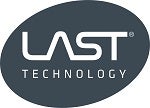Traditionally, mainstream medicine has always tried to establish standardised protocols for all patients with a given disease so as to find unambiguous and repeatable treatments on a large scale. In recent years, however, the idea of personalised medicine, an approach to disease treatment that is based on the individual characteristics of each patient, has begun to be increasingly discussed.
The basis of personalised medicine is genome mapping, a process of determining the complete order of the nitrogenous bases (A, C, G, and T) that make up an individual’s DNA. Genome mapping can be used to identify genetic differences that can influence disease susceptibility, response to treatments, and disease progression.
Researchers believe that, with this information, it is possible to define ad hoc treatments for each patient. Real tailor-made therapies. But is this really possible? Let’s start with the basics.
Basics and applications of genome mapping
The human genome consists of about 3.2 billion nitrogenous bases. Mapping the genome requires sequencing these bases, a process that has been made possible by technological advances in recent decades.
The first human genome was sequenced in 2003, thanks to the Human Genome Project-a global scientific undertaking involving hundreds of researchers from around the world. Thanks to their efforts, today genome sequencing is a relatively rapid and inexpensive process, so it is accessible to a growing number of people.
Genome mapping can be used for a variety of applications in medicine, including:
- Early diagnosis and genetic screening. Patients at risk of developing certain diseases can be
identified, even before symptoms appear. - Identification of mutations. Genome mapping has been used to identify a genetic mutation that causes acute myeloid leukaemia. Thanks to this discovery, new targeted drugs
were developed that significantly improved the prognosis of patients. In another case, it
was possible to identify a genetic mutation that causes ReW syndrome, a severe
neurodegenerative disease. - Gene therapies and stem cells. Genome mapping can be used to develop new gene and
cell therapies that aim to correct or replace defective genes. - Pharmacogenomics. By being aware of a patient’s genetic characteristics, it is possible to
identify the most effective drugs and avoid those that might instead be harmful or
ineffective for the body.
This technology has the potential to revolutionise medicine, but one must also keep in mind the
risks associated with genome mapping, especially on the privacy side. Despite these concerns, the
future of personalised medicine seems beyond positive.
The personalised medicine market
According to a report by Grand View Research, the market is expected to reach a value of $922.72bn by 2030, with a compound annual growth rate (CAGR) of 7.2% from 2023 to 2030.
The market growth is driven by the progressive improvement of technologies, which are lowering
the costs of genome sequencing, and the increasing awareness of the benefits of personalised
medicine by physicians and patients. This, combined with the steady increase in global health care
spending, are driving the growth of a market that appears to promise to revolutionise medicine.

